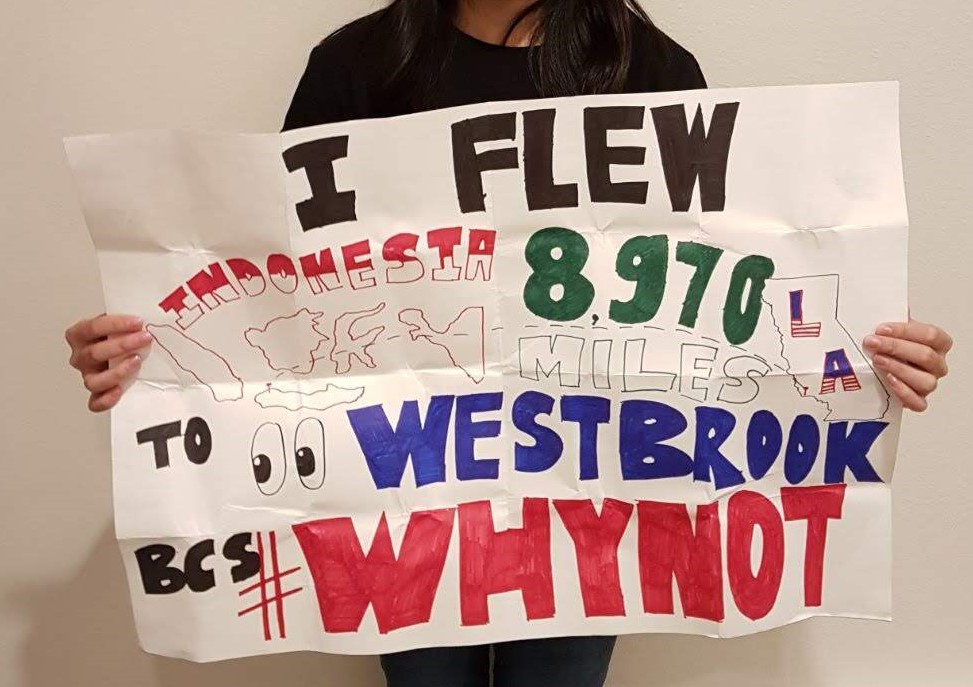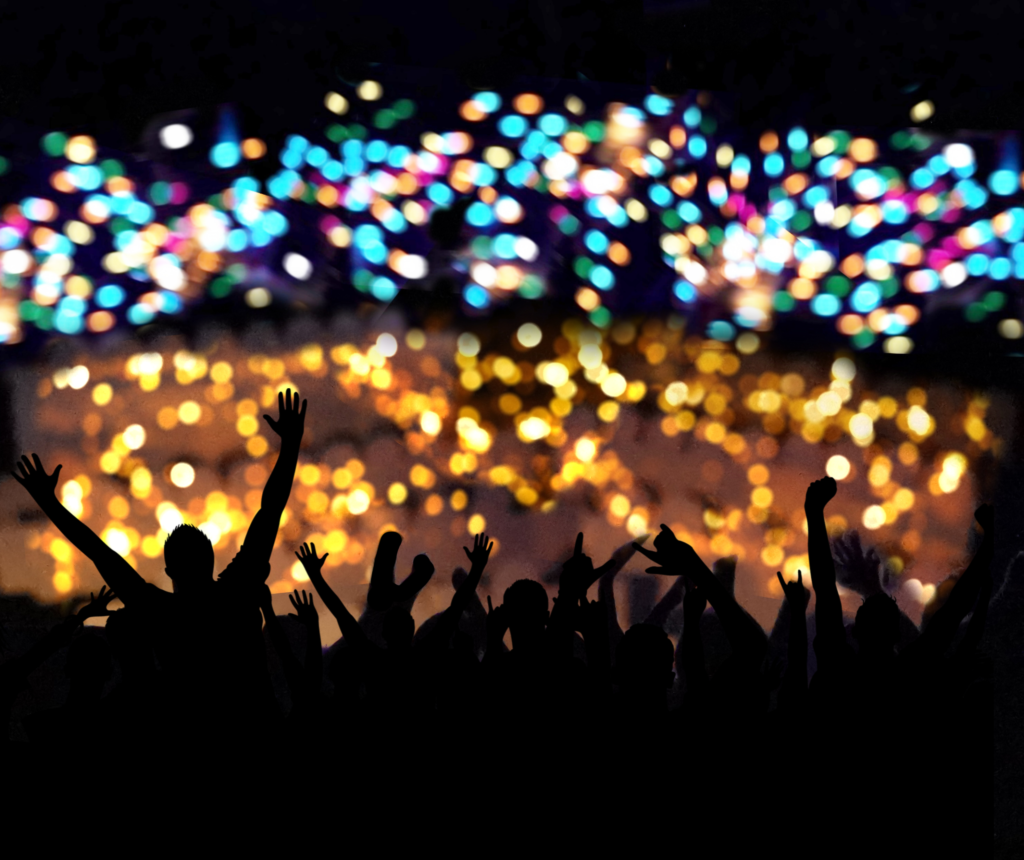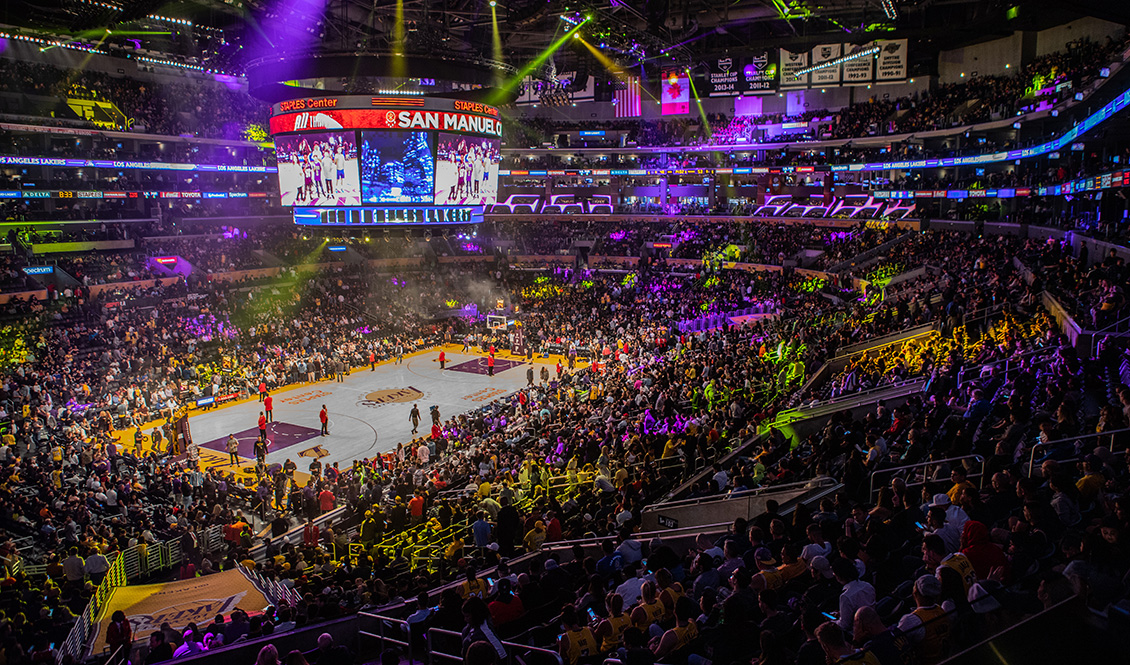It’s the Staples Center, so it was booming although at that time there was nothing golden about Lakers’ beside the color of their jerseys. The noise level that would deafen babies and bright lights didn’t deter my attention away from the guy wearing the opponent’s jersey with the number 0. The guy was Russell Westbrook, who is my favourite person in the NBA and was only a few seats away from me. To get his attention, I was armed with a custom banner and my voice to cheer (scream) all game.

With the way I was yelling all game, it was a miracle I didn’t lose all my voice the day after. Although at the end he didn’t acknowledge his most faithful supporter, I still revisit the videos that I took during warmup, introduction, and the game itself all the way until he disappeared back to the tunnel from time to time just to relive that experience. It was one of the most memorable nights for me. The excitement that I felt can only be compared to the excitement I felt as a kid the night before a school trip. So, it was only appropriate that the night became the inspiration for my project “Superfan for a Night”.
About the project
The brief asked me to recreate the atmosphere of a place. The word atmosphere doesn’t mean a replica of the place, but a certain quality of feeling one has in relation to space and place. My chosen place was the Staples Center, and the atmosphere I was trying to recreate was excitement. I had to represent and communicate this atmospheric feeling in three dimensions, captured through a series of photographs. In the end, I was to publish a magazine showing the project’s process and final results.
After eight intense weeks, going through the cycle of lost-yay-what and feeling the exact opposite of what I was trying to recreate, here are four things I learned in my process of completing the project.
1. Choosing the best tools for me
The best tools are subjective. Photoshop is known to be the best editing software, but in the hands of people who don’t know how to use it Picsart is better. I just started to learn Photoshop during the early stage of the project, and there were images that I tried to edit using Photoshop but couldn’t succeed for days. In my frustration, I used Picsart and the edit took me just one day.
Even though Photoshop offers sophisticated editing, Picsart is more beginner friendly as lots of heavy lifting are done by the app itself. The best tools are ones that I know how to use best. Especially when starting out, using the simplest tool is often the best. But as I grow more familiar with Photoshop, I’ll get better results by making use of it’s powerful features.

2. Freedom is overrated
People love to say that they have freedom, but more freedom means more decision. The project brief allowed me to choose whatever font and colours I wanted for the magazine. Initially, I thought it’s great, but the endless possible combinations overwhelmed me. It took me so much time choosing the “right” ones, so instead I decided to not use my freedom. I restricted myself with two fonts and used black and white as the primary colours.
Known as the Paradox of Choice, people find it more difficult to choose when given too many options. The lesson here is to be more efficient and deliver better results, I should always set some kind of constraints.
3. Project based learning FTW
Learning by doing + time limit + specific outcome = best learning. In 12 weeks, I learned Adobe Photoshop, Illustrator, InDesign, and photography. Although the journey was filled with sleepless nights and countless failures, I was able to put together this magazine in just 8 weeks without prior knowledge.
I had planned to learn Photoshop throughout the years but have never gotten around it. Now that I think about it, I never had a specific goal or project in mind. I just learned by watching, which makes me tend to forget what I learned quickly. In this project, I learned by creating a magazine and I knew what was expected of me from the brief. I also had a deadline that disciplined my progress.
If you want to learn something, the best way to do it is to have your own project!

4. Efforts and time that you put in shows
I tried at least 15 angles, took over 1000 photographs, and did days of editing for the project. Only less than 50 of them made it to the magazine. I thought that it’s such a shame that I did so much but showed to little. I thought that my hard work wouldn’t be fully appreciated without showing all the things that I have done.
However, as my friends complimented my project I realized that all the hard work is reflected in the final result. Those “wasted” photographs helped shape the final outcome. Without taking the extra photographs I wouldn’t have the same quality of work.
To see the project, click here.
If you like what you read then get updates every week!
I’ll never spam, you can unsubscribe anytime 🙂
